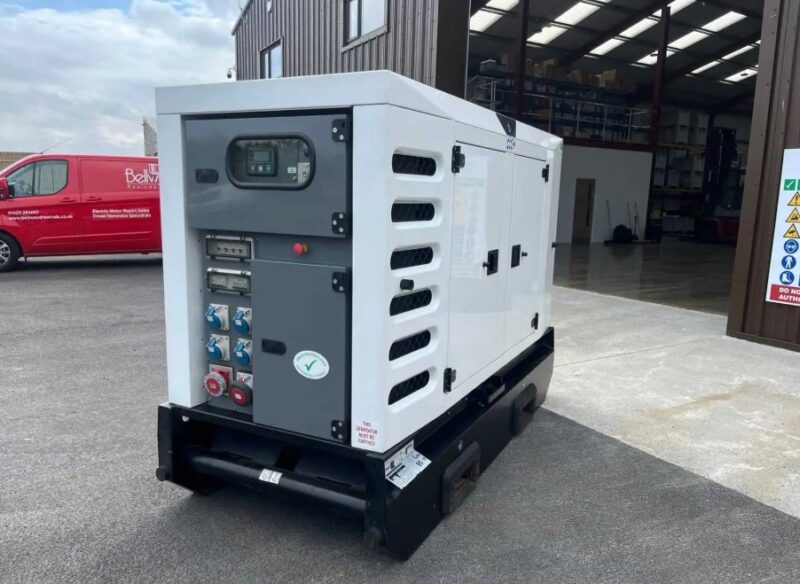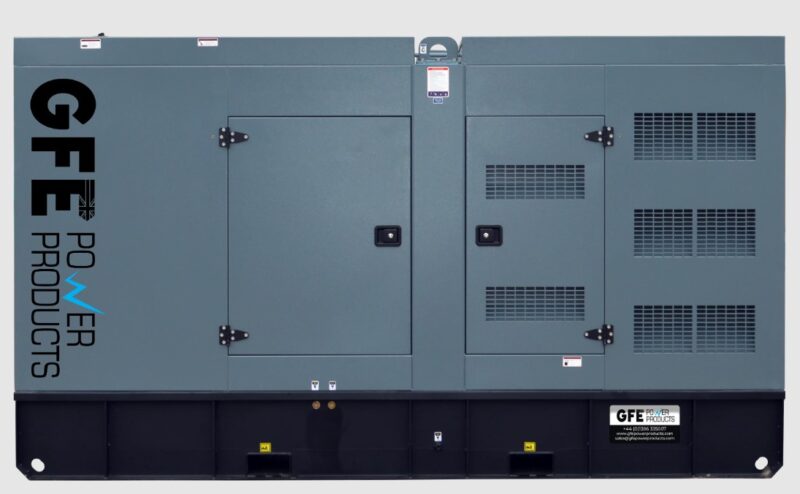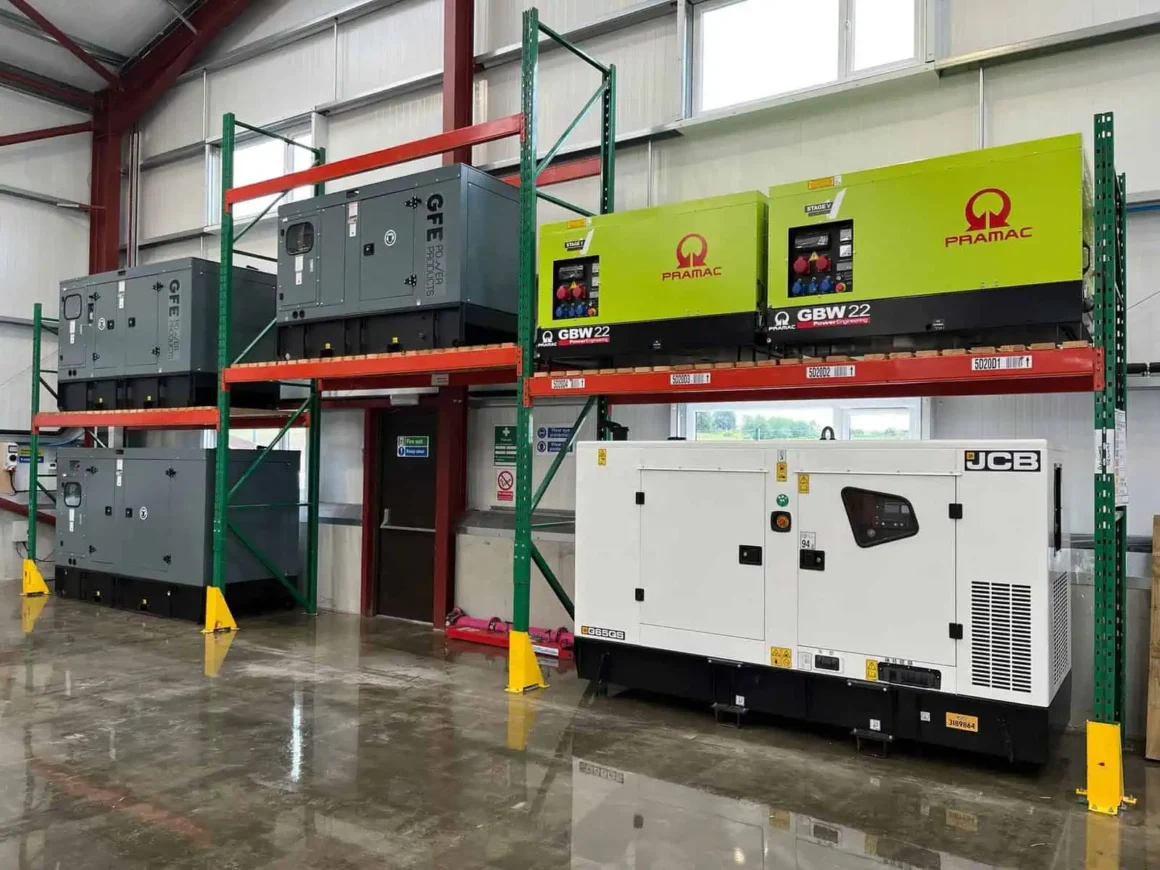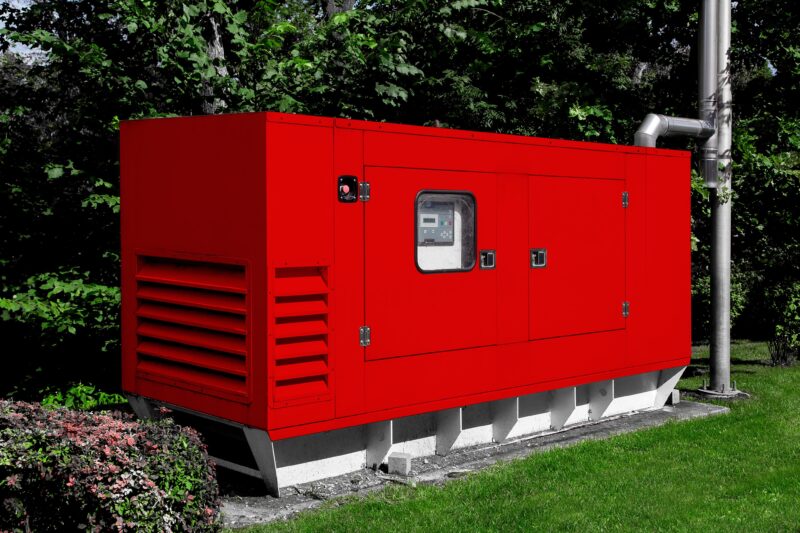When it comes to choosing a generator, one of the most important considerations is the output power it can provide. Measured in kilovolt-amperes (kVA), this figure indicates how much load a generator can support at any given time. But understanding how this translates to real-world use isn’t always straightforward. Different kVA ratings are suited to different needs, and using the wrong size generator can either leave you short of power or result in unnecessary expense.
Generators are used across a wide range of settings—from small residential applications to large-scale commercial or industrial operations. Whether it’s for backup power during a mains outage, running tools on a construction site, or supplying electricity to remote events or agricultural settings, the right kVA rating ensures efficiency, reliability and safety. Knowing what each level of output is typically used for will help you find the right unit for your specific needs.
Generators Below 10 kVA

Small generators with a rating of up to 10 kVA are ideal for light domestic or recreational use. These compact units are often seen powering garden tools, lighting, or appliances during short-term power cuts. They’re also popular with caravan and motorhome users, providing just enough electricity to run kettles, chargers, low-power heaters, and small kitchen appliances while on the move.
These generators are usually petrol or inverter-powered, making them easy to transport and operate without complex installation. For homeowners looking to keep the basics running during occasional outages—such as fridges, internet routers, and a couple of lights—this output range is often sufficient. However, for anything more substantial, such as multiple appliances or heating systems, a larger generator is usually required.
Generators Between 10 and 30 kVA
This mid-range category is where backup power for larger homes and small businesses typically begins. Units between 10 and 30 kVA can support several household appliances at once, making them ideal for properties that rely heavily on electricity for cooking, heating or working from home. These generators are also used in retail settings, small offices, and for mobile operations like catering vans or market stalls, where power demands are moderate but continuous.
In farming, generators in this range are often used for essential systems like milking machines, feed processing, and lighting in barns or poultry sheds. On small construction sites, a 20 to 30 kVA diesel generator is capable of powering tools, temporary lighting, and small welfare units without interruption. They offer a good balance between portability and capability, often mounted on trailers for ease of movement.
Generators Between 30 and 60 kVA

Stepping up in capacity, generators in the 30 to 60 kVA range are typically used for larger construction sites, medium-sized events, or commercial properties with higher energy needs. They provide enough power to support site cabins, multiple power tools, security systems, and temporary heating or air conditioning.
In rural or off-grid settings, this output range is also common for farm estates or residential properties with high energy consumption, especially where no mains connection is available. These generators can support electric gates, water pumps, pressure systems and even backup power for telecoms or IT equipment.
They’re often built with soundproofed canopies, allowing for quieter operation, which is particularly important in residential areas or locations where noise pollution is a concern. While they may not be enough for very large-scale operations, they strike a useful middle ground between portability and performance.
Generators Between 60 and 100 kVA
Generators in this category start to cover more demanding applications, often becoming the backbone of critical operations during power outages. Many schools, community centres, healthcare facilities, and data storage sites rely on this level of generator to ensure that lights, computers, security systems, and essential services continue functioning without interruption.
In the commercial world, these generators are used to power workshops, warehouses, and small manufacturing units. They’re also common in hospitality, especially for hotels or restaurants that need to maintain lighting, kitchen equipment, refrigeration, and heating systems during periods without mains electricity.
Temporary events such as music festivals, weddings, or large outdoor gatherings often require generators in this range to power everything from lighting rigs and sound equipment to catering and bar services. Their reliability, load-handling capacity, and ability to run for extended periods make them a popular choice in both backup and prime power situations.
Generators Between 100 and 250 kVA

Once you move above 100 kVA, you’re looking at serious backup or prime power capabilities. These generators are commonly found on large commercial sites, logistics hubs, and industrial operations where downtime is not an option. From powering production lines to refrigeration units in distribution centres, this size of generator is capable of handling multiple heavy loads without faltering.
They are often used as the primary source of power for remote or temporary industrial sites, such as mining or quarry operations, where mains access is limited or non-existent. In the events sector, these generators are typically used to supply a main stage, large catering operations, or high-capacity lighting and infrastructure.
Hospitals and healthcare environments with extensive electrical systems may also rely on this kVA range to ensure life-saving equipment, HVAC systems, and computer networks remain active during blackouts. The key advantage here is reliability under load—generators in this class can cope with large and varying demands, delivering stable and efficient power where it’s needed most.
Generators Over 250 kVA
Large-scale commercial and industrial settings often require generators over 250 kVA, especially when consistent, high-demand power is required around the clock. This includes data centres, manufacturing facilities, large hospitals, airports, and utility providers. These generators are engineered for continuous use and are frequently configured in parallel with other generators to create scalable power banks for more complex systems.
In standby mode, a generator of this size can support entire buildings or estates, managing everything from heating and cooling to machinery, IT systems, and security. For businesses where downtime equals lost revenue, such as server farms or food processing plants, this level of backup power offers essential security.
Generators in this category are usually permanently installed and connected to a fuel supply with automatic transfer switches, ensuring seamless changeover during outages. While they represent a significant investment, the performance and resilience they provide make them a vital component in many sectors.
Choosing the Right Generator for Your Needs

Selecting a generator by kVA output begins with understanding what you plan to power and how frequently you expect to use it. A small household needing a short-term backup for lighting and internet will have very different needs compared to a manufacturing site that runs machinery continuously. It’s also important to consider whether your generator will be used as a prime power source or as a standby solution for emergencies.
In the UK, weather-related outages and rural connectivity issues have made generators an increasingly common choice for homeowners and businesses alike. However, oversizing your generator can lead to inefficiency, while undersizing it can result in overloads and poor performance. Calculating your peak load, factoring in startup surges for certain appliances, and allowing for future power demands will help you make a more accurate decision.
Working with a generator supplier or electrical contractor to assess your power requirements is the best way to ensure you get the right match. They can advise on installation, fuel type, emissions compliance, and noise levels—all important considerations depending on your location and intended use.
Matching Power Output to Real-World Scenarios
Generators play a vital role in keeping homes, businesses, and infrastructure running when the grid fails or isn’t available. From compact units perfect for domestic backup to industrial giants powering round-the-clock operations, understanding kVA output is the first step in finding the right solution for your power needs.
Whether you’re safeguarding your home from winter outages or powering an entire factory floor, choosing the correct kVA rating ensures you have enough energy when it matters most—without wasting resources or risking system failure.


